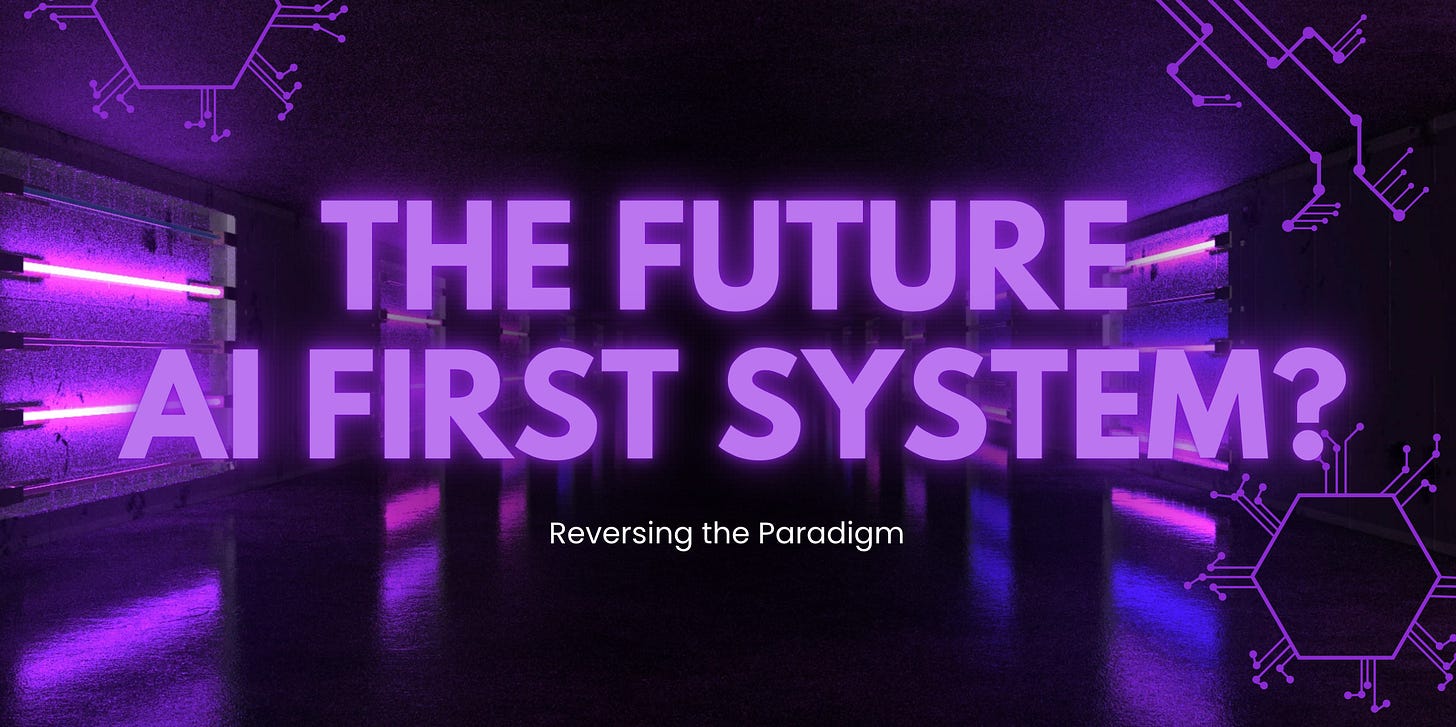How to Build AI-First Systems with Human Guidance
Reversing the Paradigm
Today, AI is no longer just an “assistant” to humans—it’s rapidly becoming the core executor within systems. Cosimo Spera and Garima Agrawal propose flipping the traditional “human-led, AI-assisted” paradigm; build AI-First systems, where AI leads and humans provide strategy, ethics, and oversight in the loop.
Limitations of the Current Paradigm
Humans in the Driver’s Seat: AI today mostly improve our work efficiency—code completion (e.g. Copilot), chatbots, recommendation engines—to speed us up and guide decisions.
Emerging Bottlenecks: In high-frequency or complex scenarios, waiting on human approvals can cause latency, and managing many parallel tasks risks cognitive overload and leads to accidents. Training costs also escalate…
Why “Flip” the Model?
Increasing Capabilities: LLM and AI agents now understand, reason, and ‘adapt’ environments well enough to run complex tasks nonstop—think real-time trading, sentiment monitoring, or supply-chain scheduling—and can learn and optimise strategies.
Scale and Speed: AI-First systems deliver millisecond-level responses and 24/7 operation, dramatically boosting efficiency—especially in data-intensive, time-sensitive domains like finance, logistics, customer support, and cybersecurity.
Core Architecture & Design Principles
To unlock AI-First capabilities safely and effectively, systems must be built on a clear, layered architecture with targeted human oversight at key decision points. Below are the two foundational design principles that make this possible.
Multi-Layered Collaboration
AI-First Layer: LLMs, planning agents, and multimodal perception modules execute tasks.
Human Interface Layer: Dashboards, explainability tools, and interactive UIs let human inspector intervene.
Governance & Ethics Layer: Risk monitoring, rollback mechanisms, audit logs, and compliance guardrails ensure alignment with human values.
Selective HITL (Human-in-the-Loop)
Humans aren’t involved at every step—only at critical junctions (e.g. complex decisions or anomalies), preserving autonomy while ensuring safety.
Illustrative Use Cases
Real-world deployments highlight the transformative power of AI-First architectures across diverse domains:
Automated Trading: AI continuously analyses markets, executes strategies, and manages risk—only flagging major market swings for human review.
Intelligent Customer Support: AI handles routine inquiries end-to-end, escalating only the sensitive or novel issues to human agents.
Cybersecurity Monitoring: AI detects and responds to threats in real time, with human security teams stepping in for high-severity incidents.
Outlook & Reflections
AI-First isn’t about AI “dictatorship,” but about human-AI “symbiosis”: leveraging AI’s ability so people can focus on strategy, innovation, and ethical problems. The key to success is embedding human values, transparency, and accountability mechanisms from day one—making tomorrow’s AI both powerful and principled.
However, it’s crucial to recognise and address potential drawbacks and risks within this paradigm:
Increased Complexity: Establishing multi-layered AI-First architectures and governance frameworks demands significant upfront investment in design, tooling, and training. Organisations must be prepared for an extended pilot phase to validate prototypes and refine human oversight mechanisms.
Over-Reliance Risk: As AI systems take on more autonomy, teams may lose critical skills, reducing their ability to intervene during anomalies or unforeseen events. Continuous human training and scenario-based drills are essential to maintain situational awareness.
Blind Spots: Even with selective human-in-the-loop checkpoints, AI models can exhibit unpredictable behaviour in edge cases, potentially causing repetitional or even safety harms. Rigorous stress testing, adversarial analyses, and ethical audits should be integral to deployments.
Regulatory Uncertainty: The legal landscape for autonomous AI systems is still evolving globally. Organisations must engage proactively with regulators, adopt flexible compliance strategies, and maintain audit logs to adapt quickly to new requirements.
Copyright Ambiguity: When human oversight and input are minimal, ownership and copyright status of AI-generated outputs become unclear, posing legal risks and complicating rights management.
Justin Ju
| AI Engineer at Chelsea AI Venture | justin@chelseaai.co.uk |
If you are interested in implementing AI solutions in your company, please subscribe to this channel. We will be sharing methodologies for implementing AI into business ideas and providing tech solutions to different problems.
KirokuForms is an example of Human-in-the-Loop (HITL) in action—combining AI-powered form generation with human oversight at every step to ensure accuracy, accessibility, and compliance. If you’re tired of slow, bloated forms, give KirokuForms a try. It’s a smart, fast form-building solution from Chelsea AI Venture. Spin up a free project at KirokuForms and see how pure HTML forms can transform your user experience!
At Chelsea AI Venture, we are offering services for scaling up AI in SMEs and we occasionally organise tech training events. Do not hesitate to contact me via email or by visiting our website for any questions or business cooperation opportunities.




